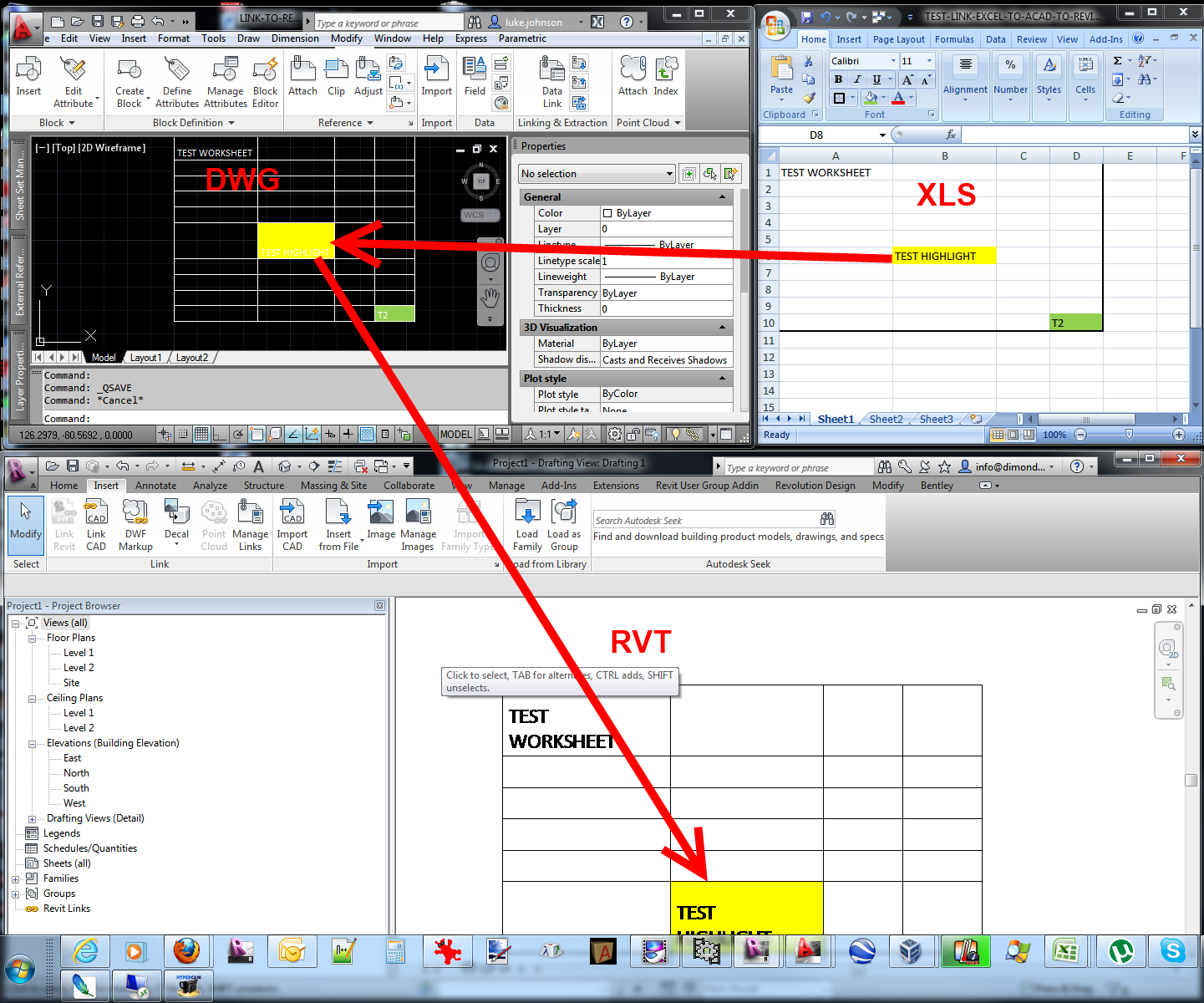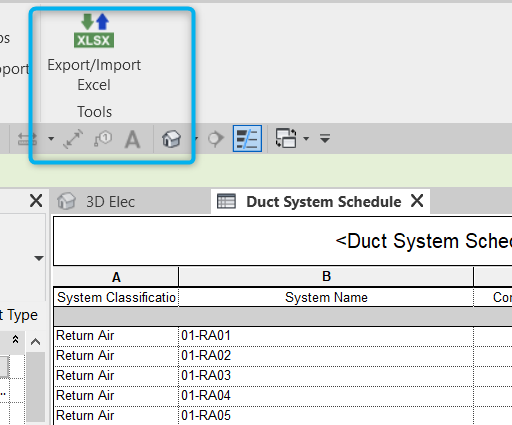Import Excel into Revit: Simplifying Your Operations
Wiki Article
Breaking Obstacles: Excel Importation Techniques for Advanced Revit Users
Are you an advanced Revit user seeking to take your skills to the following degree? In this write-up, we will reveal you exactly how to break obstacles by leveraging Excel for importation in Revit. Discover numerous data importation approaches and master Excel combination to enhance your Revit modeling capabilities. With our tricks and pointers, you can get rid of importation challenges and come to be a true specialist in using Excel for your Revit tasks. Prepare yourself to master your Revit journey!Advanced Revit Users: Leveraging Excel for Importation
You can easily take advantage of Excel for importation as an advanced Revit individual. Excel is an effective tool that can substantially enhance your operations and performance in Revit. With its ability to manage huge amounts of data and execute complex computations, Excel can be a beneficial asset in managing and arranging your task information.One method to utilize Excel for importation is by using the "Web link Excel" feature in Revit. This function permits you to connect an Excel spreadsheet directly into your Revit job, allowing you to update and synchronize information in between the two programs. When dealing with routines or tracking adjustments in your task., this can be specifically useful.
Another method to use Excel is by making use of the "Import/Export" attribute in Revit. This feature allows you to import and export data between Revit and Excel, giving you the flexibility to work with data in both programs. You can import data from Excel into Revit to create elements such as doors, walls, or rooms, and you can also export data from Revit to Excel for additional analysis or reporting.

Exploring Data Importation Techniques in Revit Utilizing Excel
Checking out exactly how to import data from Excel into Revit provides effective methods for incorporating information. When you import data from Excel, you can seamlessly move information such as area routines, material listings, and tools information right into your Revit job. This process enables you to save time and effort by avoiding hand-operated information entry.To import data from Excel into Revit, you can utilize the "Import/Export" feature. This feature enables you to map the Excel information fields to the corresponding Revit parameters, guaranteeing that the information is correctly appointed within the design. By choosing the suitable import choices, you can regulate exactly how the data is imported and exactly how it connects with your job.
Another technique for importing data from Excel into Revit is by making use of Dynamo. With Eager beaver, you can create personalized scripts that import information from Excel and manipulate it within your Revit task.
Mastering Excel Combination for Advanced Revit Modeling
Mastering Excel combination for advanced Revit modeling involves using efficient techniques to seamlessly transfer information and automate tasks within your job. By taking advantage of the power of Excel, you can improve your Revit modeling operations and save important time. One crucial technique is importing data from Excel spread sheets directly into your Revit model. This enables you to inhabit parameters, such as space names or product quantities, with simplicity. With a couple of straightforward steps, you can map the Excel columns to the matching Revit criteria and import the information accurately.One more beneficial approach is exporting information from Revit to Excel. This allows you to extract information from your model, such as routines or material quantities, and evaluate it in Excel utilizing solutions, graphes, or various other effective tools. By leveraging the abilities of Excel, you can do intricate calculations, produce personalized records, and gain beneficial understandings right into your task.
In enhancement to information transfer, Excel combination can automate repeated jobs in Revit. By developing macros or scripts in Excel, you can automate you could try this out processes like producing sights, producing sheets, or applying common families - revit tool. This not just saves time but also ensures uniformity throughout your job
To grasp Excel combination in Revit, it is essential to understand the information framework and exactly how Revit communicates with Excel. By familiarizing on your own with the readily available devices and methods, you can unlock the complete capacity of Excel integration and take your Revit modeling to the following degree.
Overcoming Importation Obstacles: Excel Techniques for Revit Specialists
When overcoming importation difficulties, it's vital to be familiar with reliable Excel techniques that can profit experts in Revit. As a sophisticated Revit user, you comprehend the relevance of perfectly importing information from Excel right into your projects.
One more valuable method is utilizing the "Transpose" feature in Excel. This allows you to convert information from rows to columns or vice versa. When importing data right into Revit, this can be particularly valuable when you have information in an upright format in Excel, however you require it to be in a straight format in Revit.
Moreover, making use of Excel solutions such as VLOOKUP and INDEX-MATCH can significantly help in mapping information from Excel to Revit. These solutions permit you to look for particular worths in Excel and fetch corresponding data from one more column. This can save you time and initiative when importing big datasets right into Revit.
Excel Data Importation Tips and Tricks for Advanced Revit Users
By more helpful hints acquainting on your own with reliable Excel tips and techniques, you can improve your information importation process as an innovative individual of Revit. Excel is an effective tool that can considerably facilitate the importation of information right into Revit, saving you time and boosting your productivity. One helpful pointer is to use the "Text to he has a good point Columns" attribute in Excel to divide data into various columns based on a delimiter. When you have data in a solitary column that requires to be divided into several columns in Revit, this can be particularly handy. Additionally, utilizing Excel's "Paste Unique" attribute permits you to paste data from Excel into Revit while preserving format, such as cell color or font design. When importing information that calls for specific format in Revit, this can be specifically useful. One more valuable technique is to make use of Excel's "Locate and Change" feature to swiftly make adjustments to your information prior to importing it right into Revit. You can easily change particular text or characters with others, saving you the time and initiative of by hand editing the data in Revit. By utilizing these Excel tips and methods, you can enhance your data importation process and end up being much more efficient in operation Revit.
Final Thought
You have currently discovered valuable strategies for importing data from Excel into Revit as an innovative individual. By leveraging the power of Excel integration, you can simplify your modeling process and get over any kind of importation tests that may develop. With these tips and methods, you will have the ability to master information importation and enhance your Revit abilities. So proceed, damage those barriers and succeed in your Revit projects!
When importing information right into Revit, this can be particularly helpful when you have data in an upright layout in Excel, but you need it to be in a straight layout in Revit.
Additionally, using Excel solutions such as VLOOKUP and INDEX-MATCH can greatly aid in mapping information from Excel to Revit. Additionally, using Excel's "Paste Special" function permits you to paste information from Excel into Revit while maintaining formatting, such as cell color or font design.
Report this wiki page